If you want to know what really drives me crazy, it’s dealing with a pot of pasta on the stove that is boiling over or sticking to the bottom while you are trying to take care of other elements of your meal.
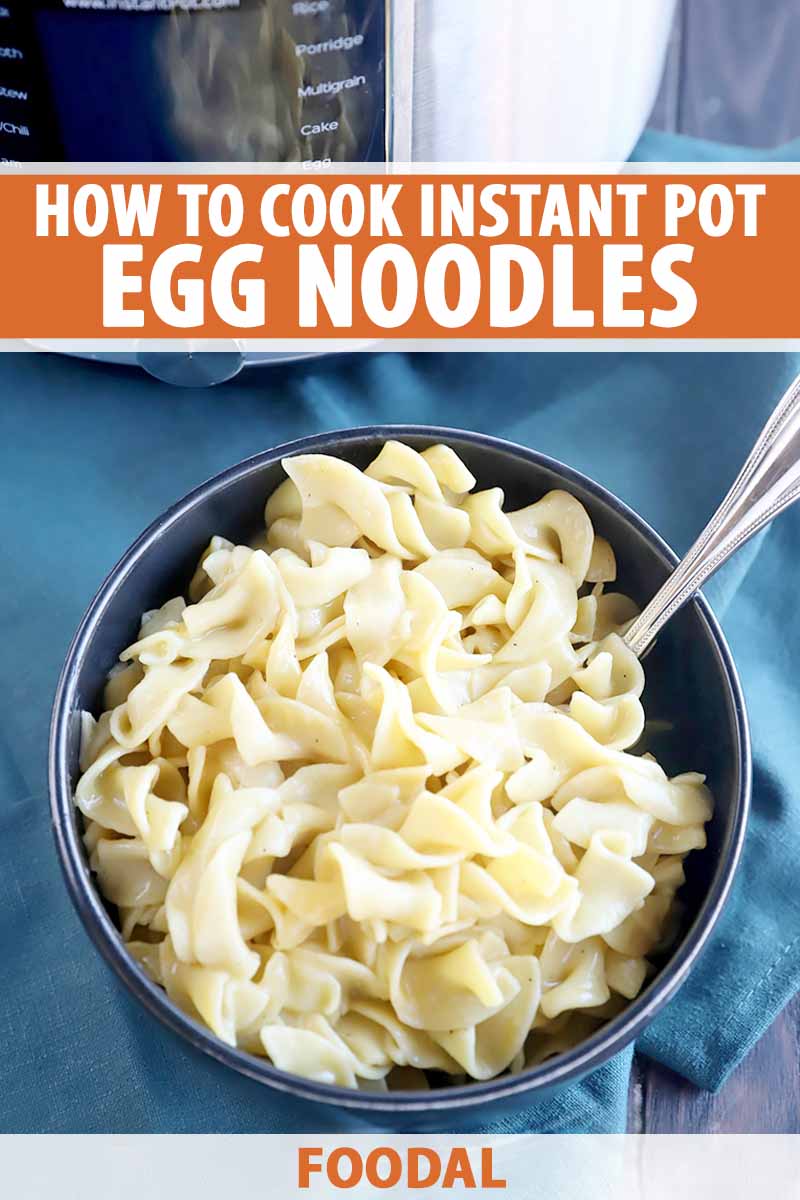
Running back and forth between the counter and various pots and pans tends to raise my anxiety level just a wee bit. Not to mention, pasta is notorious for foaming and overflowing all over the stove if you aren’t careful.
You can stir and stir, use the wooden spoon trick (which does work to stop it from boiling over, in my experience), and other secrets that people like to chat about online. But it’s just one more thing that you have to worry about, and honestly, I would rather skip all that.
That’s where the electric pressure cooker comes in. All you have to do is throw your dried pasta, salt, and water or broth in the insert, and then walk away.
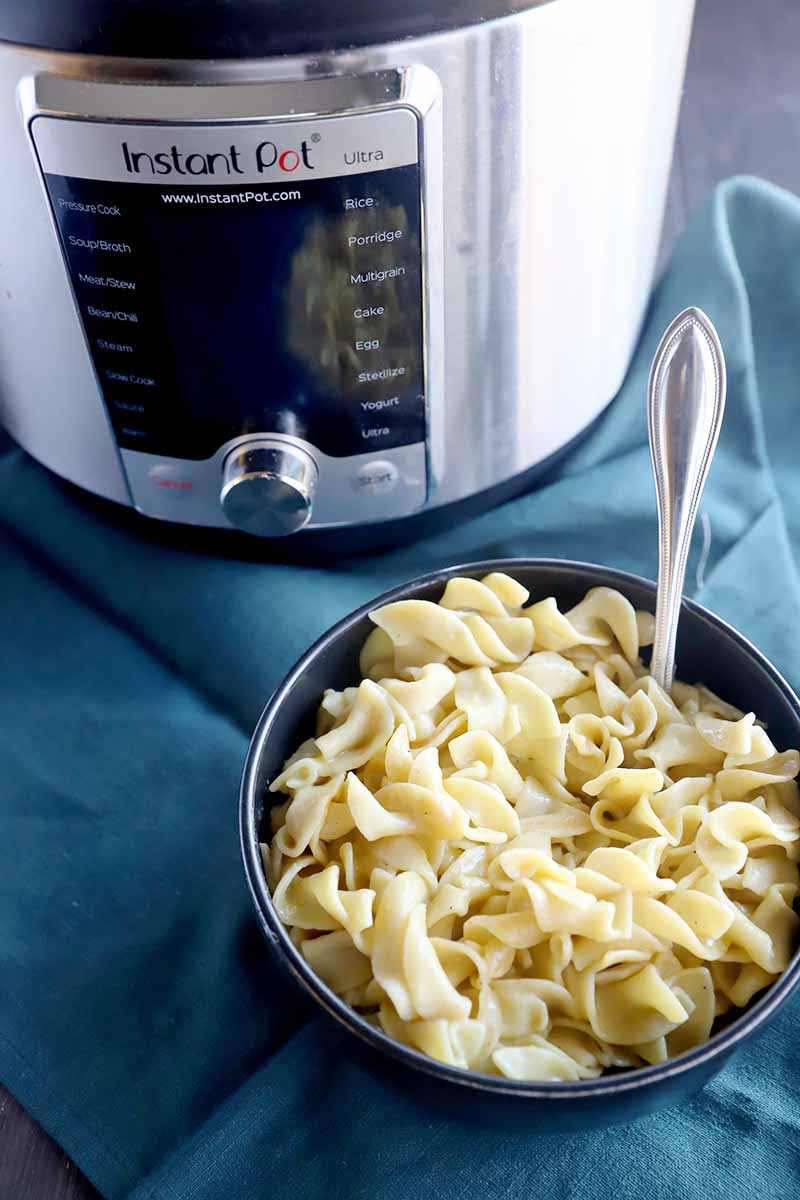
This method cuts out the time you would normally have to dedicate to babysitting your pasta. No more starchy water will overflow onto your stovetop. And it comes out the same way, with delicious results every single time.
Here’s what we’ll cover in this how-to guide:
What You’ll Learn
How to Cook Egg Noodles in the Electric Pressure Cooker
Quick and easy pasta prepared in this amazing appliance is a fantastic base for all kinds of recipes.
These noodles offer a simpler way to get one step of your selected recipe done without dirtying multiple pans, or you can enjoy them on their own as a filling and satisfying side.
Step 1 – Measure Ingredients
To begin, gather your ingredients. You will need:
- 8 ounces wide egg noodles
- 2 cups water or chicken broth
- 1/2 teaspoon salt
Measure out your ingredients as listed.
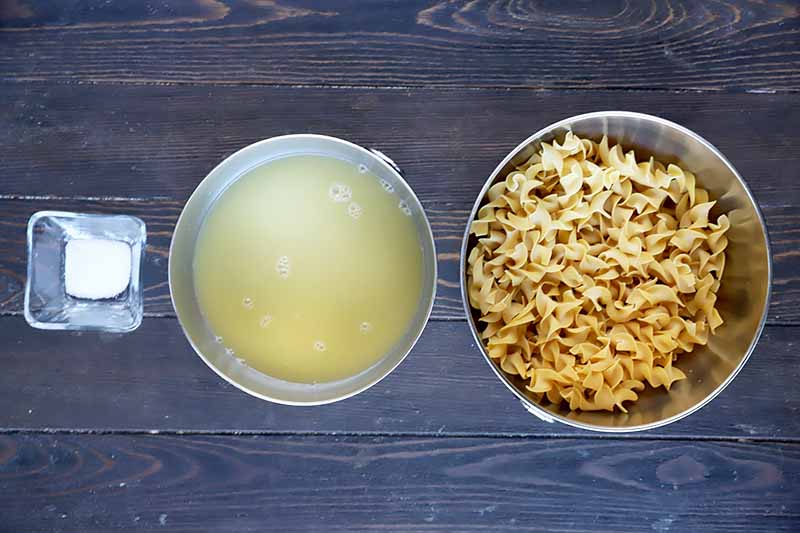
If you are making buttered noodles or want them to have more flavor, I love to use chicken broth as an easy way to flavor them. Vegetable broth instead of water would work too.
Be sure to use a low-sodium version, or omit the added salt.
Step 2 – Cook
Add the egg noodles, water or broth, and salt to the electric pressure cooker insert. Stir to combine, and seal the lid.
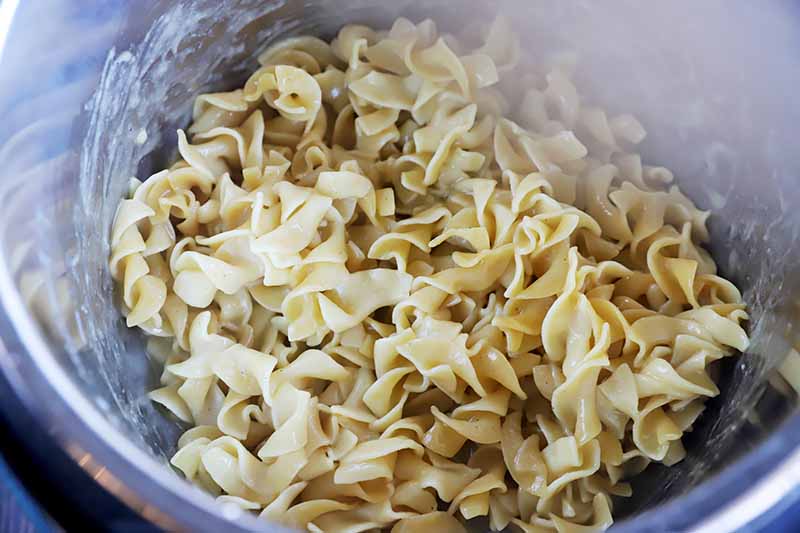
Set to Manual, and cook on High pressure for 1 minute.
Let the pressure naturally release for 5 minutes, then manually release any remaining pressure.
Remove the lid immediately, and stir the pasta well before serving.
Serving Suggestions
There’s something so comforting about egg noodles. Maybe it’s just me, but whenever I make them, I am instantly taken back to my childhood. This is the type of pasta that my mom would consistently turn to.

She would use the noodles in her tuna casserole most of the time, and it was one of my favorite recipes.
The pasta was mixed with canned tuna and a creamy sauce, then topped with potato chips (please tell me your mom did this too). It was a dinner that I always looked forward to, week after week.
In fact, it’s a recipe that I still make a couple times a month to this day.
That’s something that my husband is sincerely grateful for, even though he doesn’t particularly love tuna. Somehow, the tuna noodle casserole serves as a magic bridge to enjoying this type of seafood.
When you are making this variety of pasta, whatever you make with it, my number one recommendation is to use chicken or vegetable broth instead of water if you have some available.
It punches up the flavor of the noodles, and gives added depth to whatever recipe you are planning to make.
If you want more ideas for how to use those perfectly prepared noodles, these are some of my personal favorites:
- Buttered, with some freshly chopped parsley
- Beef stroganoff (or make it with chicken or turkey for a lightened up version)
- Noodle soup, whether it’s chicken, beef, or vegetarian (perfect for when someone in the house is sick)
- Kugel
- Hungarian stew or goulash (such a delicious comfort food for chilly nights in)
It’s so much easier when you don’t have to worry about making the noodles on the stove.
I like to make mine ahead of time, and store them in the fridge in an airtight container to cut down my kitchen time on a weeknight even more.
Can I Keep These on Warm When They’re Done?
After you have let the pressure naturally release for 5 minutes, you want to be sure to manually release the remaining steam right away.
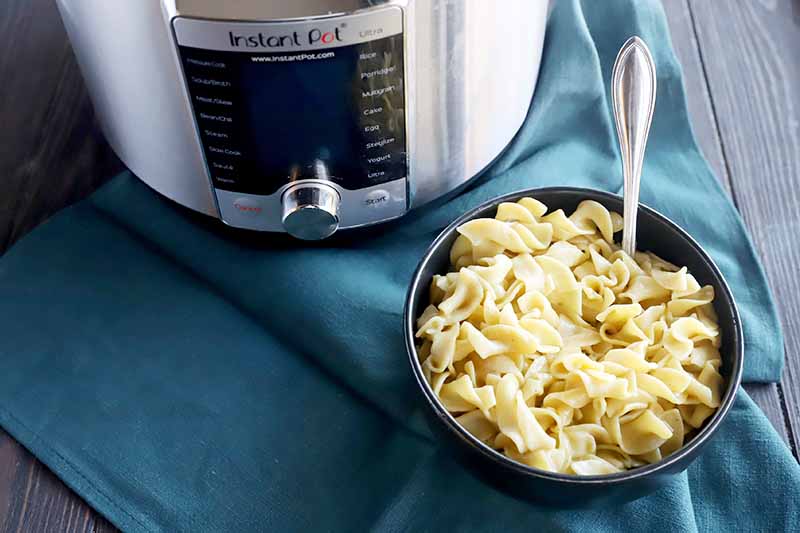
Unlike other recipes where you can let things sit for a while in the appliance on the counter with the lid on, you don’t want to do the same with noodles.
Otherwise, they will overcook and become mushy. Be sure to tend to them as soon as they have reached the ideal texture.
Remove the lid, and if you need to keep them warm for more than a few minutes before serving, I’d recommend transferring them to a serving dish instead of keeping them in the insert. Refrain from using the warming function, or they may stick to the bottom.
What’s your favorite way to enjoy egg noodles? Tell us in the comments below.
And for more info on how to prepare different types of pasta in the electric pressure cooker, check out these how-to’s next:
Photos by Meghan Yager, © Ask the Experts, LLC. ALL RIGHTS RESERVED. See our TOS for more details.
About Meghan Yager
Meghan Yager is a food addict turned food and travel writer with a love for creating uncomplicated, gourmet recipes and devouring anything the world serves up. As the author of the food and travel blog Cake 'n Knife, Meghan focuses on unique foodie experiences from around the world to right at home in your own kitchen.

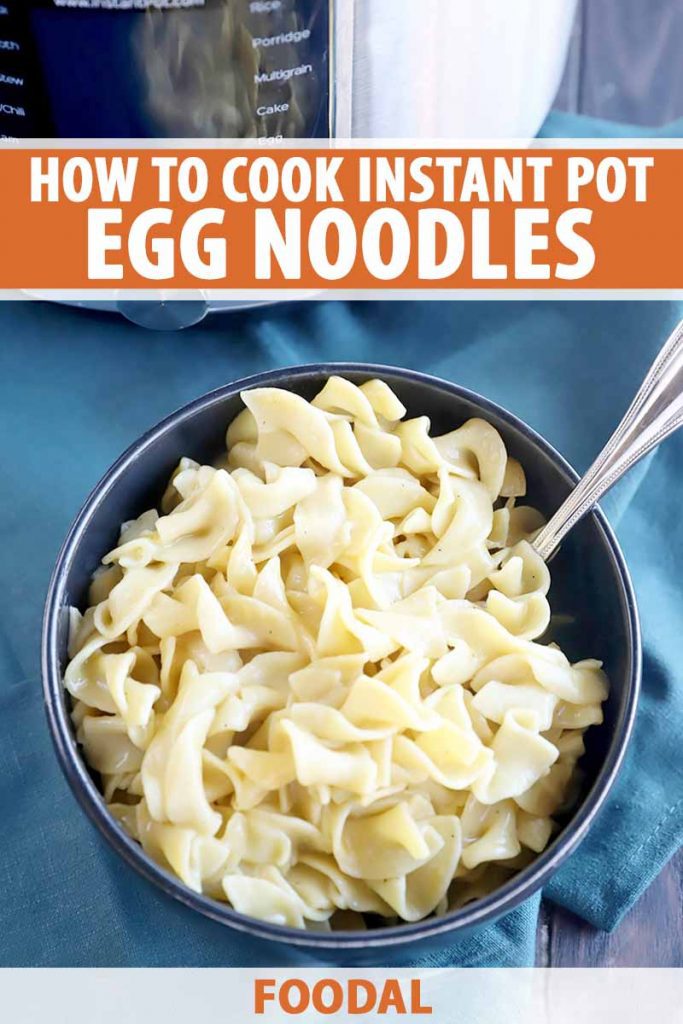



I did exactly as directed but some noodles were still crunchy- maybe l should have had 3 cups of water? Your thoughts?
Oh, no! We’re sorry about that, Barbara! Some brands of egg noodles might absorb liquid differently than others – adding more water would help to fully cook the noodles. Definitely try another 1/2 cup to 1 cup additional liquid the next time.